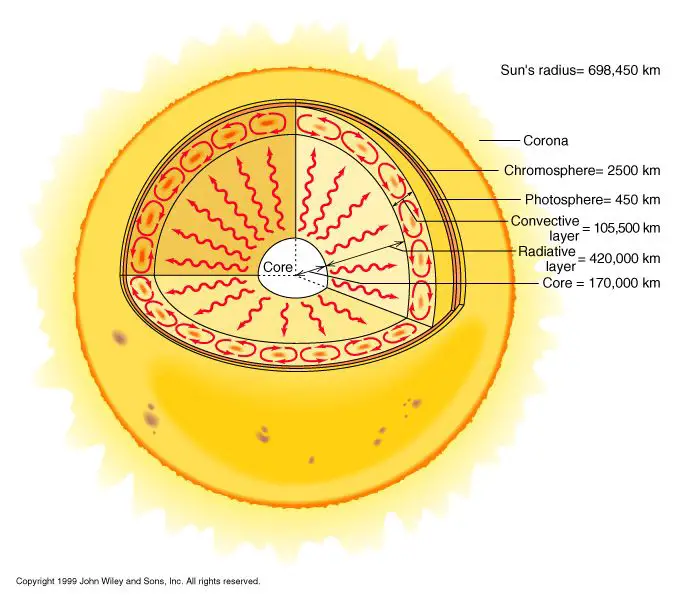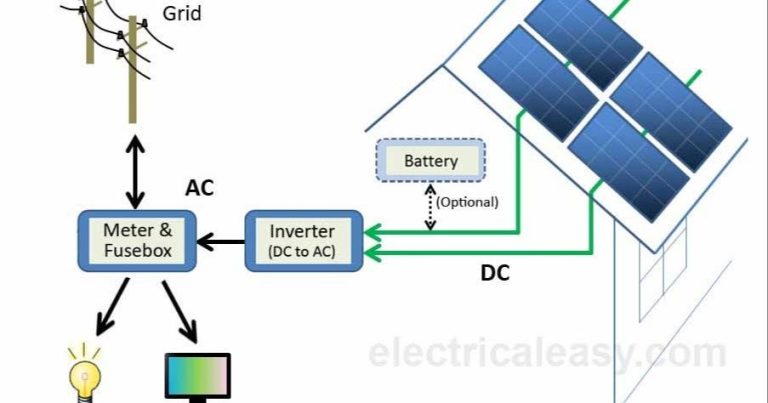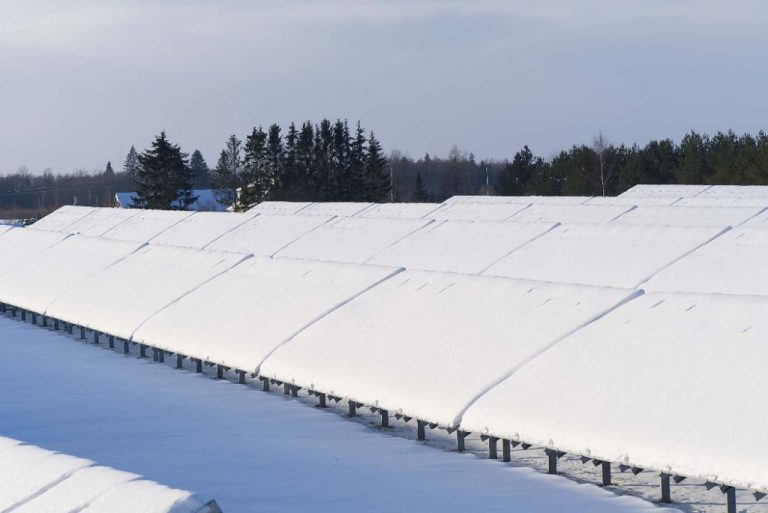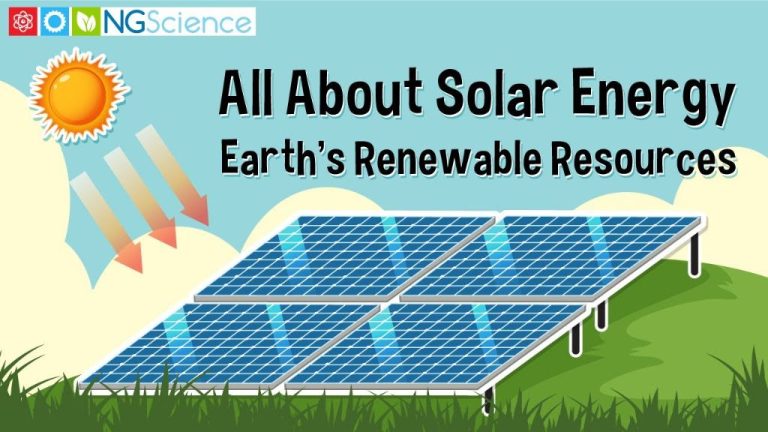Where Is Solar Energy Created In The Sun?
The Sun is the star at the center of our solar system and the source of nearly all the energy on Earth. This energy, which drives life and powers our society, originates from nuclear fusion reactions deep within the Sun’s core. In this article, we will examine the structure of the Sun and discover the specific region where the Sun’s energy is created.
We will begin with an overview of the Sun’s anatomy, including its composition and internal layers defined by changes in temperature and density. Next, we will zoom in on the core, where hydrogen atoms fuse into helium and release enormous amounts of energy. Surrounding the core is a radiative zone where this energy slowly diffuses outward, followed by a convective zone where hot plasma circulates. At the Sun’s visible surface, known as the photosphere, we observe sunspots and solar flares. The photosphere emits solar radiation and the particle stream of the solar wind. As we explore the Sun layer by layer, we will pinpoint the origins of its copious energy output that makes life possible on our planet.
Core of the Sun
The Sun generates energy through nuclear fusion reactions occurring in its core. Stars like the Sun are able to produce energy via fusion because of their enormous mass, which creates tremendous pressure and temperature at the core. The Sun’s core has a density about 150 times that of water and temperatures over 15 million degrees Celsius.
Under these extreme conditions, atoms move rapidly enough to overcome their electrostatic repulsion and collide together, fusing into heavier elements. The primary fusion reactions within the Sun’s core fuse hydrogen into helium. Specifically, four protons (hydrogen nuclei) combine to form one helium-4 nucleus, releasing energy in the process. This net fusion reaction converts about 600 million tons of hydrogen into helium every second.
The conversion of hydrogen into helium is responsible for producing the vast energy emitted by the Sun. According to Einstein’s famous equation E=mc^2, even tiny amounts of mass converted into energy produce enormous amounts of power. The Sun has continued these fusion reactions for billions of years, fueled by the immense amount of hydrogen available in its core.
Temperature and Pressure
The core of the Sun has an extremely high temperature, around 15 million degrees Celsius. This extreme heat is a result of the nuclear fusion reactions occurring at the Sun’s core, which release tremendous amounts of energy. The high density of the core also results in intense pressure, estimated to be more than 200 billion times the air pressure we experience on Earth.
These immense temperatures and pressures are required to drive and sustain the nuclear fusion of hydrogen into helium, which is the source of the Sun’s energy. Under such extreme conditions, hydrogen nuclei can get close enough and collide with enough force to overcome their electrostatic repulsion and fuse together. The gravitational pull of the Sun’s immense mass is what creates these high densities and temperatures at the core.
Without these high temperatures and crushing pressures, the fusion reactions would not occur. The core essentially acts like a nuclear fusion reactor, providing the right conditions for hydrogen atoms to fuse and release energy that supports the Sun and allows it to shine.
Radiative Zone
The radiative zone makes up around 70% of the Sun’s radius and extends from the core out to around 0.7 solar radii. This region is so dense that photons can travel only a tiny distance before interacting with ions in the plasma. Photons repeatedly scatter off ions, gradually shifting to lower energies as they make their way outward. This process can take up to 170,000 years for a single photon to traverse through the radiative zone!
The tremendous pressure in the radiative zone means the plasma here behaves more like a solid than a gas. Atoms are packed tightly together and unable to move freely. Photons essentially play a game of pinball, bouncing off one ion after another. With each scatter, the photon loses a minute amount of energy. Over long distances, this has a dramatic effect in cooling the photons. The plasma itself also slowly circulates, transporting heat outward through the radiative zone.
Convective Zone
The outermost layer of the Sun’s interior is called the convective zone. This region extends from the visible surface of the Sun (known as the photosphere) down to approximately 200,000 km below the surface. Unlike the radiative zone located beneath it, the convective zone transfers heat primarily through convection currents rather than radiation.
Convection occurs because hot gases near the Sun’s core rise while cooler gases sink. This creates constant churning motions, similar to boiling water in a pot. As hot plasma rises to the surface, it cools and sinks again, creating a convection current. These fluid motions efficiently transport heat from the interior to the surface.
In contrast, the radiative zone located beneath the convective zone transfers energy via radiation as photons propagate outward through the dense solar plasma. This radiative heat transfer is a slower process. The differences in heat transfer mechanisms distinguish the convective and radiative zones within the solar interior.
Photosphere
The photosphere is the outermost, relatively thin layer of the Sun where sunlight is emitted. It is approximately 300 miles (500 km) thick and 5000 degrees Celsius. The photosphere is what we see when we look at the Sun. While the gases below are too hot and dense to emit much visible light, things change in the photosphere. Here, the temperature and pressure have dropped just enough for photons to escape into space. This happens through a process called photon diffusion.

Photons are constantly being generated in the core and radiative zone through nuclear fusion. These photons are absorbed and reemitted countless times as they slowly work their way up through the Sun’s interior over a period of thousands to millions of years. When the photons finally reach the photosphere, the density has decreased to a point where they can begin escaping into space. The visible light that the photosphere emits is the sunlight that travels across the solar system. So despite being created deep inside the Sun’s core, the energy finally escapes as sunlight from the thin photosphere layer.
Sunspots
Sunspots are areas on the Sun’s surface that appear dark compared to the surrounding regions of bright gas. They indicate areas of intense magnetic activity that disrupts the flow of energy from the interior of the Sun to its surface.
Sunspots appear dark because they are cooler than the surrounding areas, at about 3,800°C compared to 5,500°C for the rest of the photosphere. This temperature difference is caused by the strong magnetic fields associated with sunspots that inhibit the upwelling of hot plasma from the interior. The powerful magnetic fields emerging through sunspots often form arches above the sunspot regions that can sometimes snap, releasing bursts of radiation called solar flares.
The number and pattern of sunspots appears to follow an 11-year cycle, known as the solar cycle. At the start of each new cycle, sunspots usually begin to form at mid-latitudes and then appear closer to the equator as the cycle approaches its peak. During the solar minimum when activity is low, very few sunspots appear. But near the solar maximum, extensive sunspot activity can be observed across the surface.
By tracking sunspots over time, astronomers have uncovered clues about the Sun’s magnetic field. The location and evolution of sunspots provides insights into the complex dynamo of plasma and magnetic fields driving solar cycles and weather on our closest star.
Prominences
Prominences are dramatic structures that protrude out from the Sun’s surface, extending beyond the photosphere. They are frequently associated with sunspots and can extend hundreds of thousands of kilometers into space. Prominences are cooler, denser blobs of solar material suspended in the Sun’s hot, thin corona by loops of magnetic field lines.
The most striking types of prominences are the arching vertical loops that rise high above the photosphere. Other types of prominences have a tornado-like appearance, twisting up into space. Their shapes evolve over timescales of a few days as they are buffeted by solar winds and magnetic fields.
Prominences are visible as bright features jutting out from the Sun’s limb. They shine brightly because they are several times cooler than the surrounding material at around 10,000 degrees Celsius. Their cooler gases don’t emit as much light in the visible spectrum, so they appear darker than the million degree corona.
Though massive in size, prominences are relatively cool and dense condensations of plasma that are suspended above the Sun’s surface by coronal magnetic field lines. Their dramatic spider-like shapes and billowing towers of solar material make prominences one of the most visually striking features of our dynamic Sun.
The Solar Cycle
The Sun goes through an approximately 11-year solar cycle, where solar activity rises and falls over time. This cyclic variation in activity is driven by changes in the Sun’s magnetic field.
At the start of a new solar cycle, the Sun’s magnetic field is relatively weak and simple, with field lines pointing north and south at the poles. But over the course of the 11-year cycle, the magnetic field strengthens and becomes more complicated and twisted. Solar activity like sunspots, solar flares, and coronal mass ejections tend to follow the solar cycle, occurring more frequently at times of peak magnetic activity, known as solar maximum.
After the peak, solar activity declines as the magnetic field weakens, leading to a quiet period known as solar minimum. The cycle then begins again, taking around 11 years from one minimum to the next. Scientists track and predict this solar cycle by observing changes in the number and pattern of sunspots over time.
While overall solar irradiance does not change much throughout the solar cycle, the complex and dynamic magnetic activity during solar maximum can lead to space weather effects that impact technology and astronauts in space. Understanding the 11-year solar cycle allows us to prepare for these changes in space weather.
Conclusion
To summarize, solar energy is primarily created deep in the core of the Sun through nuclear fusion. At the core, extreme temperatures of 15 million degrees Celsius enable hydrogen atoms to fuse into helium, releasing enormous amounts of energy. This energy slowly makes its way outward through the dense radiative zone, taking about 171,000 years to reach the convective zone. Here, the lower density allows hot plasma to circulate and rise to the surface. At the photosphere, the energy finally radiates into space in the form of light and heat that we observe as sunshine. Along the journey are fascinating features like sunspots, prominences, and solar flares. The 11-year solar cycle modulates this activity. In the end, the core of the Sun serves as a massive nuclear reactor, providing the energy that powers life on Earth through its long journey to the solar surface. This summarizes the key steps in how and where solar energy is created.





